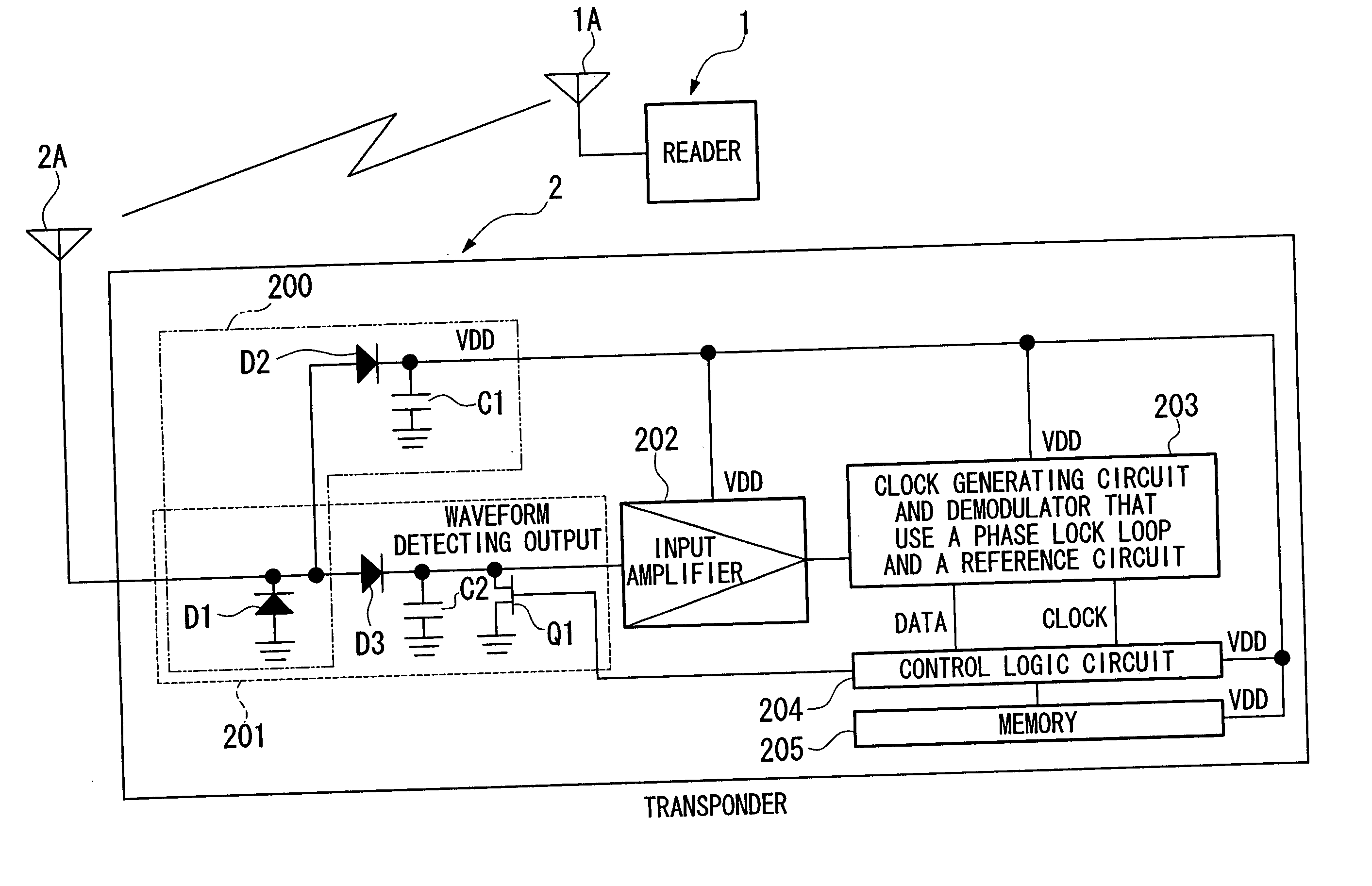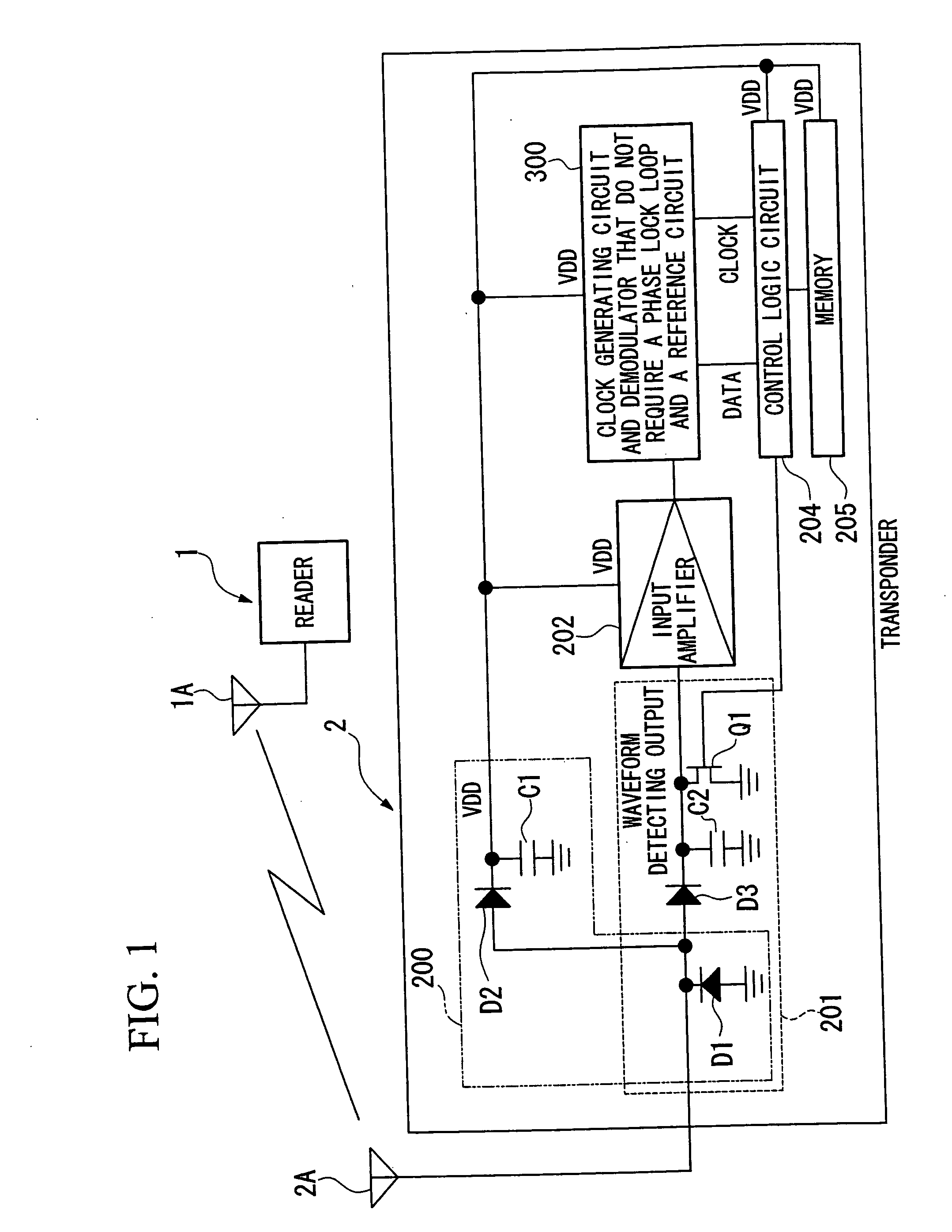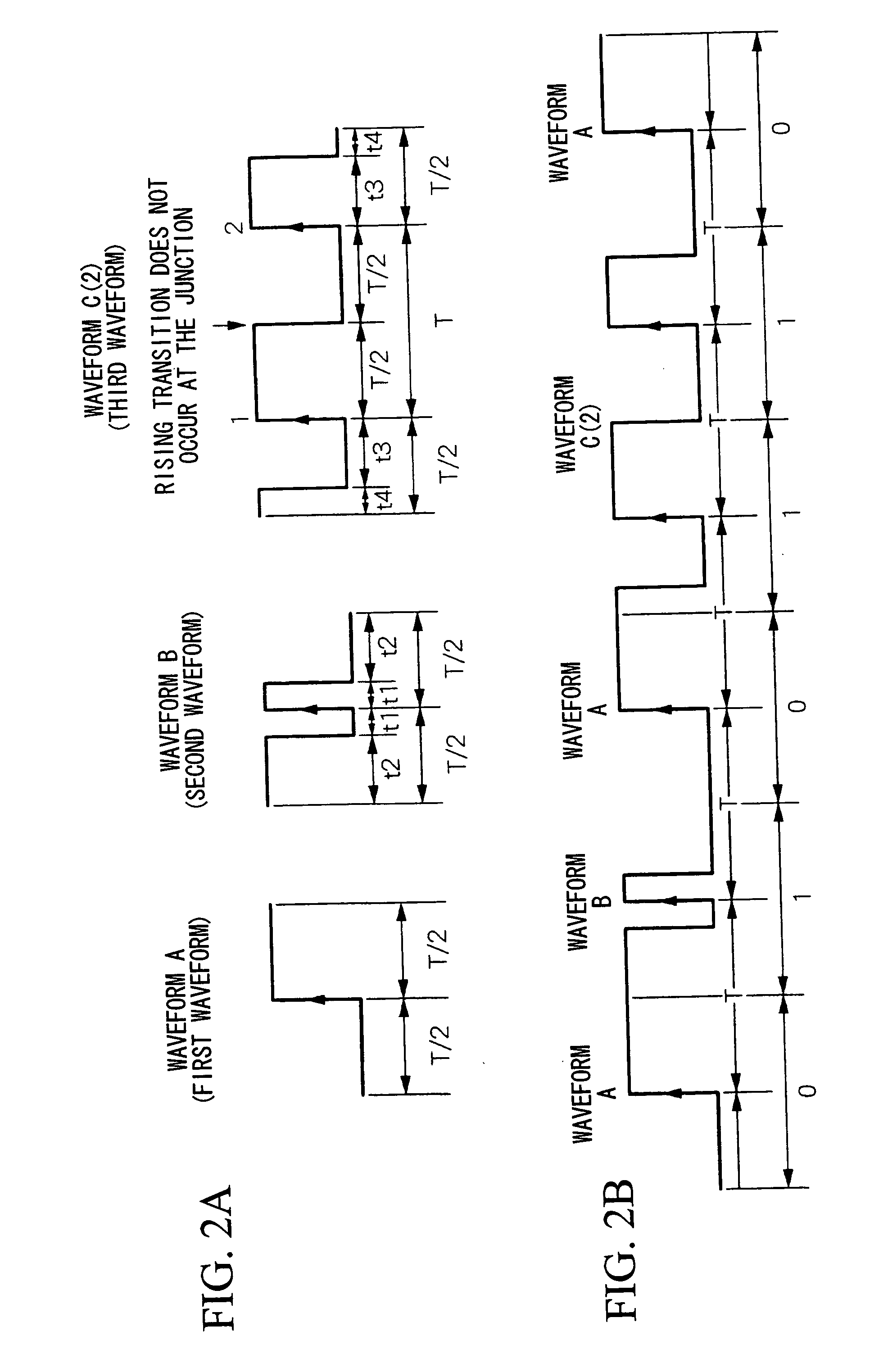Non-contact rf id system communication method, non-contact rf id system, transmitter, and receiver
a non-contact, radio frequency identification technology, applied in the direction of burglar alarm mechanical actuation, burglar alarm by hand-portable objects removal, etc., can solve the problems of increasing consumption current, reading errors, and complicated reference circuits, and achieve the effect of easy generation of clock signals
- Summary
- Abstract
- Description
- Claims
- Application Information
AI Technical Summary
Benefits of technology
Problems solved by technology
Method used
Image
Examples
Embodiment Construction
[0051] Below, embodiments of the present invention will be explained in detail with reference to the drawings. The configuration of the noncontact RF ID system of the present embodiment is shown in FIG. 1. As shown in the drawing, the noncontact RF ID system of the present embodiment provides a reader 1 that reads data and a transponder 2 that receives a signal that includes data and a clock signal transmitted from the reader 1. The transponder 2 provides an antenna 2A, a DC power detecting circuit 200, a signal detecting circuit 201, an input amplifier 202, a clock generating circuit and demodulator 300 that do not require a phase locked loop and a reference circuit, a control logic circuit 204, and a memory 205.
[0052] The DC power detecting circuit 200 provides a diode D1, a power source diode D2, and a power accumulating capacitor C1. The signal detecting circuit 201 provides a diode D1, a waveform detecting diode D3, a load capacitor C2, and an FET switch Q1.
[0053] According t...
PUM
 Login to View More
Login to View More Abstract
Description
Claims
Application Information
 Login to View More
Login to View More - R&D
- Intellectual Property
- Life Sciences
- Materials
- Tech Scout
- Unparalleled Data Quality
- Higher Quality Content
- 60% Fewer Hallucinations
Browse by: Latest US Patents, China's latest patents, Technical Efficacy Thesaurus, Application Domain, Technology Topic, Popular Technical Reports.
© 2025 PatSnap. All rights reserved.Legal|Privacy policy|Modern Slavery Act Transparency Statement|Sitemap|About US| Contact US: help@patsnap.com



